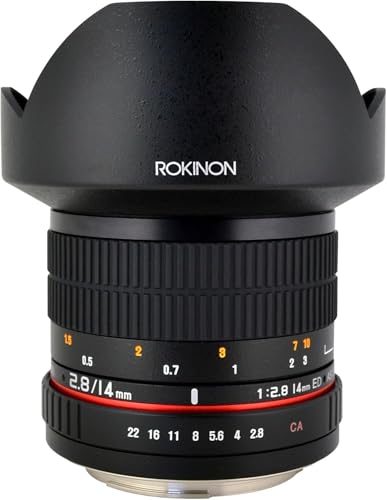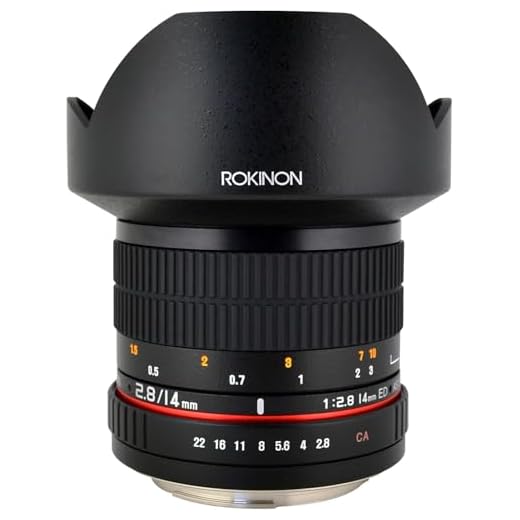




Astrophotography is a fascinating and rewarding hobby that allows you to capture the beauty of the night sky with your digital SLR camera. Whether you’re a beginner or an experienced photographer, this guide will help you navigate the challenges of astrophotography and take stunning photos of the cosmos.
From capturing the Milky Way to photographing distant galaxies and nebulae, astrophotography offers endless opportunities to explore the wonders of the universe. With the right equipment, techniques, and a little patience, you can create breathtaking images that will leave you in awe of the cosmos.
In this comprehensive guide, we’ll cover everything you need to know to get started with astrophotography using your digital SLR camera. We’ll discuss the best camera settings, equipment recommendations, and tips for capturing stunning photos of the night sky. Get ready to embark on a journey through the stars and unlock the beauty of the universe with your digital SLR camera!
Choosing the Right Equipment
When it comes to astrophotography with digital SLR cameras, choosing the right equipment is crucial. Here are some key factors to consider:
Camera Body
Look for a camera body that offers manual exposure controls, a high ISO range, and good noise performance. Full-frame sensors are preferable for capturing more light and detail in your images.
Lenses
Invest in high-quality lenses with wide apertures to gather more light and achieve better bokeh. Wide-angle lenses are great for capturing expansive night sky scenes, while telephoto lenses are ideal for detailed shots of celestial objects.
- Consider a fast prime lens with a wide aperture (e.g., f/1.4 or f/2.8) for low-light conditions.
- Opt for lenses with minimal distortion and chromatic aberration for sharper images.
By selecting the right camera body and lenses, you can enhance your astrophotography experience and capture stunning images of the night sky.
Understanding Camera Settings
When it comes to astrophotography with digital SLR cameras, understanding your camera settings is crucial. Here are some key settings you need to be familiar with:
1. Manual Mode
For astrophotography, it’s best to shoot in manual mode so you have full control over settings like aperture, shutter speed, and ISO. This allows you to adjust these settings to capture the night sky in the best possible way.
2. Aperture
The aperture setting on your camera controls the amount of light that enters the lens. For astrophotography, you’ll want to use a wide aperture (low f-stop number) to let in as much light as possible. This will help you capture the faint light of distant stars and galaxies.
Understanding and mastering these camera settings will help you take stunning astrophotography images with your digital SLR camera.
Planning Your Astrophotography Session
Before heading out for your astrophotography session, it’s crucial to plan ahead to ensure a successful shoot. Here are some key steps to consider:
1. Location Scouting
Choose a location that is away from city lights and offers a clear view of the night sky. Look for places with minimal light pollution to capture the best images.
2. Weather Check
Keep an eye on the weather forecast to ensure clear skies for your shoot. Cloud cover can obstruct your view of the stars, so plan your session on a night with minimal to no clouds.
By carefully planning your astrophotography session, you can maximize your chances of capturing stunning images of the night sky with your digital SLR camera.
Setting Up Your DSLR Camera
Before you start capturing stunning astrophotography images with your DSLR camera, it’s important to properly set up your camera for the best results. Here are some key steps to follow:
1. Use a sturdy tripod: To avoid camera shake and ensure sharp images, it’s essential to mount your DSLR camera on a stable tripod.
2. Set your camera to manual mode: For astrophotography, manual mode gives you full control over settings like aperture, shutter speed, and ISO.
3. Choose the right lens: Select a wide-angle lens with a fast aperture for capturing the night sky effectively.
4. Adjust your camera settings: Set your aperture to its widest setting, use a high ISO for better sensitivity in low light conditions, and adjust your shutter speed based on the movement of the stars.
5. Consider using a remote shutter release: This accessory can help you avoid camera shake when capturing long exposure shots.
By following these steps, you’ll be well on your way to capturing stunning astrophotography images with your DSLR camera.
Taking Stellar Photos
When it comes to astrophotography with digital SLR cameras, capturing stunning images of the night sky is an exciting and rewarding experience. Here are some tips to help you take stellar photos:
1. Choose the right location: Find a dark, remote location away from city lights to minimize light pollution and enhance the visibility of stars and celestial objects.
2. Use a sturdy tripod: Stability is crucial for long exposure shots. Make sure your camera is securely mounted on a sturdy tripod to avoid camera shake and ensure sharp images.
3. Set the right exposure settings: Experiment with different exposure settings to find the perfect balance between capturing enough light and avoiding overexposure. Start with a wide aperture and a high ISO for bright, detailed images.
4. Focus on infinity: Set your lens to manual focus and adjust it to infinity to ensure that distant stars and galaxies are sharp and in focus.
5. Experiment with different compositions: Get creative with your compositions by including foreground elements such as trees, mountains, or buildings to add depth and interest to your photos.
6. Practice patience and persistence: Astrophotography requires time and dedication. Be patient, experiment with different techniques, and don’t be discouraged by initial challenges. With practice and persistence, you’ll improve your skills and capture stunning photos of the night sky.
Post-Processing Techniques
Once you have captured your astrophotography images with your digital SLR camera, the next step is post-processing. Post-processing is a crucial part of astrophotography as it allows you to enhance and bring out the details in your images. Here are some post-processing techniques to help you get the most out of your astrophotography images:
1. Noise Reduction
One common issue in astrophotography images is noise, especially in low-light conditions. Use noise reduction tools in software like Adobe Lightroom or Photoshop to reduce noise and improve the overall quality of your images.
2. Color Correction
Adjust the color balance of your astrophotography images to bring out the true colors of the stars and galaxies you have captured. Use color correction tools to enhance the colors and make your images more visually appealing.
Sharing Your Astrophotography Work
Once you have captured stunning images of the night sky with your digital SLR camera, you may want to share your work with others who appreciate astrophotography. Here are some tips on how to share your astrophotography work:
1. Social Media
One of the easiest ways to share your astrophotography work is through social media platforms such as Instagram, Facebook, and Twitter. You can create a dedicated account for your astrophotography and post your images for your followers to see and appreciate.
2. Online Astrophotography Communities
Joining online astrophotography communities such as forums and websites dedicated to astrophotography is a great way to connect with fellow astrophotography enthusiasts. You can share your work, receive feedback, and learn from others in the community.
| Tip: | When sharing your astrophotography work online, make sure to properly credit the equipment you used, the settings you used for capturing the image, and any editing techniques you applied. |
Resources for Further Learning
For those interested in diving deeper into the world of astrophotography with digital SLR cameras, there are plenty of resources available online. Here are some recommended sites and books to help you expand your knowledge:
Online Resources:
- Lonely Speck – A fantastic website dedicated to astrophotography, featuring tutorials, guides, and gear reviews.
- Cloudy Nights Forum – An active online community where you can ask questions, share your images, and learn from experienced astrophotographers.
- Astropix – A treasure trove of information on astrophotography techniques, equipment, and image processing.
Books:
- “The Astrophotography Manual” by Chris Woodhouse – A comprehensive guide to astrophotography techniques, equipment, and image processing.
- “Night Sky Photography: From Basics to Post-Processing” by Jennifer Wu and James Martin – A great resource for beginners looking to improve their night sky photography skills.
Exploring these resources will not only enhance your understanding of astrophotography but also inspire you to capture breathtaking images of the night sky with your digital SLR camera.
FAQ
What equipment do I need for astrophotography with a digital SLR camera?
For astrophotography with a digital SLR camera, you will need a DSLR camera with manual settings, a sturdy tripod, a wide-angle lens with a fast aperture, a remote shutter release, and a star tracker if you want to capture long exposures of the night sky.
How do I set up my digital SLR camera for astrophotography?
To set up your digital SLR camera for astrophotography, you will need to use manual mode, set your aperture to its widest setting, adjust your ISO to a high value, and set your shutter speed based on the rule of 500 for capturing stars without trailing.
What are some tips for capturing stunning astrophotography with a digital SLR camera?
To capture stunning astrophotography with a digital SLR camera, it’s important to find a dark location away from light pollution, use a sturdy tripod to keep your camera stable, experiment with different settings to find the right exposure, and consider using a star tracker for longer exposures.
Are there any recommended software programs for processing astrophotography images taken with a digital SLR camera?
Yes, there are several recommended software programs for processing astrophotography images taken with a digital SLR camera, including Adobe Photoshop, Lightroom, DeepSkyStacker, and StarTools.
Can I use a digital SLR camera with a kit lens for astrophotography?
While you can use a digital SLR camera with a kit lens for astrophotography, it is recommended to use a wide-angle lens with a fast aperture for better results. Kit lenses may not be able to capture the full beauty of the night sky due to their limitations in aperture and field of view.









